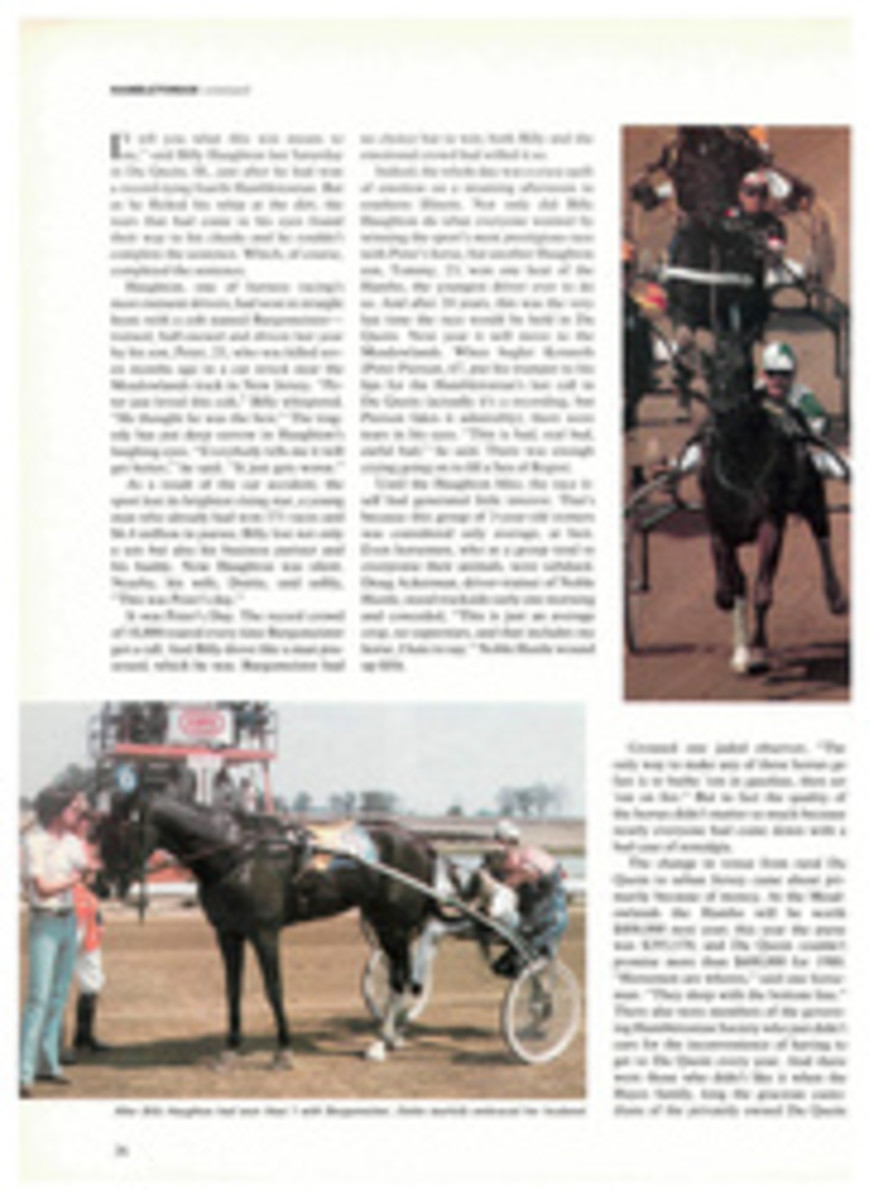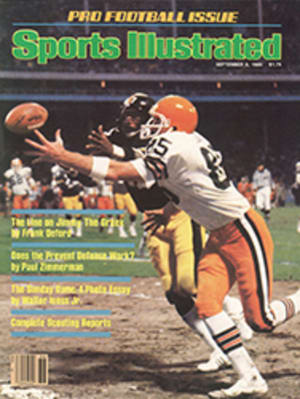
SLUGGER MOOSE ALEXANDER IS GONE AND, ALAS, HE'S ALL BUT FORGOTTEN
The early 1930s were the Golden Age of first basemen. Lou Gehrig, Jimmy Foxx. George Sisler, Bill Terry, Hank Green-berg, Jim Bottomley, George Kelly—that's seven Hall of Famers who played the position between 1930 and 1933. The supporting cast included Joe Judge, a .297 career hitter, and Lew Fonseca (.316), the 1929 American League batting champion. However, not all of the above could hit the ball like Dale (Moose) Alexander, a lumbering 6'3", 220-pound Tennessee farm boy who was fated to become the Rodney Dangerfield of the game of baseball.
To get any respect back in those lively-ball days a player had to bat a least .300. Alexander compiled a formidable .331 average for his five-year major league career, hit better than .300 during 17 of his 19 years in pro ball, in 1929 had perhaps the most productive season at the plate of any rookie and edged Foxx for the 1932 A.L. batting title.
A lot of good it did him. Following the 1933 season, Alexander was banished to minor league oblivion in the prime of his career, never to see the big leagues again. Today he remains little more than a footnote in the chronicles of the period, an all-but-forgotten slugger who once was considered the righthanded, heir apparent to Babe Ruth by more than one sportswriter.
In 1928, Alexander led the International League in hitting with a .380 average, then signed with Detroit. As a 26-year-old rookie he finished 10th in hitting (.343), fifth in homers (25) and tied for first in hits (215) with teammate Charlie Gehringer. Had there been a Rookie of the Year award then, it assuredly would have been his. His batting average stands as the best ever by an American League first-year player, and in 1975 Baseball Digest picked him as the first baseman on its alltime all-rookie team.
In 1930 and '31, Alexander hit .326 and .325, 18th- and 12th-best in the league, but at the start of the '32 season Tiger Manager Bucky Harris benched him to make room for sweet-fielding but light-hitting Harry Davis. Then, in one of Detroit's greatest trading gaffes, early in the season Harris dealt both Alexander and Outfielder Roy Johnson to Boston for Outfielder Earl Webb. Webb had set the major league single-season mark for doubles (67) in 1931 but was now in the twilight of his career. Alexander hit .367 to become the first Red Sox player to win a batting title; he and Harry Walker (.363, 1947, St. Louis and Philadelphia) are the only ones ever to be batting champs while playing for two teams in a single season.
"Dale had one peculiarity," recalls Joe Cashman, who covered the Sox for the Boston Record for 42 years until his retirement in 1970. "He hit everything to the right of second base. He's the only righthanded hitter I've ever seen that other teams used the Williams shift against. A righthander who doesn't pull in Fenway has to be out of his mind, but Big Alex won the crown hitting to the deepest part of the field."
If Alexander didn't feel rejected in Detroit, he certainly must have in Boston. In July of 1933 he was spiked and forced out of the lineup for several weeks. One day during a game he was in the clubhouse receiving a new form of heat therapy for the injury. The trainer, who was watching the game from the bench, became so engrossed in a Sox rally that he forgot about Alexander. By the time the trainer had returned to the clubhouse, Alexander's left leg, to quote John Drohan of the Boston Traveler, "was roasted like a leg of lamb." He finished the year with a .281.
But things got even worse for Moose. At the end of the 1933 season the Red Sox hired his nemesis, Harris, who had managed the Tigers through five dreary seasons. One of Harris' first moves was to send Alexander to the minors in exchange for three young pitchers. Although the leg injury was a factor in his decision. Harris still considered Alexander an inept fielder.
Just how poor Alexander's fielding was remains unclear. While he led the league's first basemen in errors his first two seasons and a few of his contemporaries now remember him as being very mediocre, others, among them Tiger teammate Billy Rogell and Yankee Pitcher Lefty Gomez, maintain that he was adequate defensively. "Alexander was one of the great righthanded hitters," says Gomez. "People said he couldn't play first base, but I never saw him make a bad play."
One point on which no one disagrees is that Alexander wasn't a fast runner. "A great hitter, but it took two or three doubles to score him," recalls Gehringer. "When he made a big lunge to his right to reach a ground ball, he'd be stuck. If he came up with it, he usually couldn't beat the runner to the bag. And when he couldn't field the ball and I could, the pitcher had to cover for him." There's no telling what he could have accomplished as a DH, a role for which he would have been perfectly cast.
Klutz though he may have been on the base paths and with the glove, Alexander batted .336 for Newark in the International League in 1934. Then it was on to the American Association and Kansas City, where he hit .358 and .315 and once clubbed four consecutive home runs. In 1941 Alexander retired and began a 30-year career scouting for the Giants, Braves and Red Sox. His lack of renown had been a product of plain bad luck. He played on dismal teams. No matter how well he hit, a teammate overshadowed him. When he batted .343 in 1929, Harry Heilmann, another Hall of Famer, finished at .344. The next season Gehringer hit four points better. Even Alexander's hitting title is somewhat besmirched. One Red Sox history lists Smead Jolley as the team leader in 1932 because Alexander had come to bat 392 times, eight shy of the minimum the author deemed necessary for consideration. (The league requirement at the time was left to the discretion of the league's president.) Worse still, the Detroit Tiger media guide devotes two pages to "Tigers to Remember," and doesn't remember Alexander at all.
Why the gods of baseball turned on Alexander is hard to fathom. But if it's possible for the tenor of a man's career to be summed up by a single incident, then what happened to him one afternoon in Detroit says it all. Gehringer recalls: "He smashed a tremendous shot to dead center that hit about 20 feet up our flagpole just inside the fence. An inch either way and it would have been way up in the bleachers, but the ball bounced right back into play and nearly ended up in the infield. Any ordinary guy would have been standing at second, but Dale got only a single out of it.

